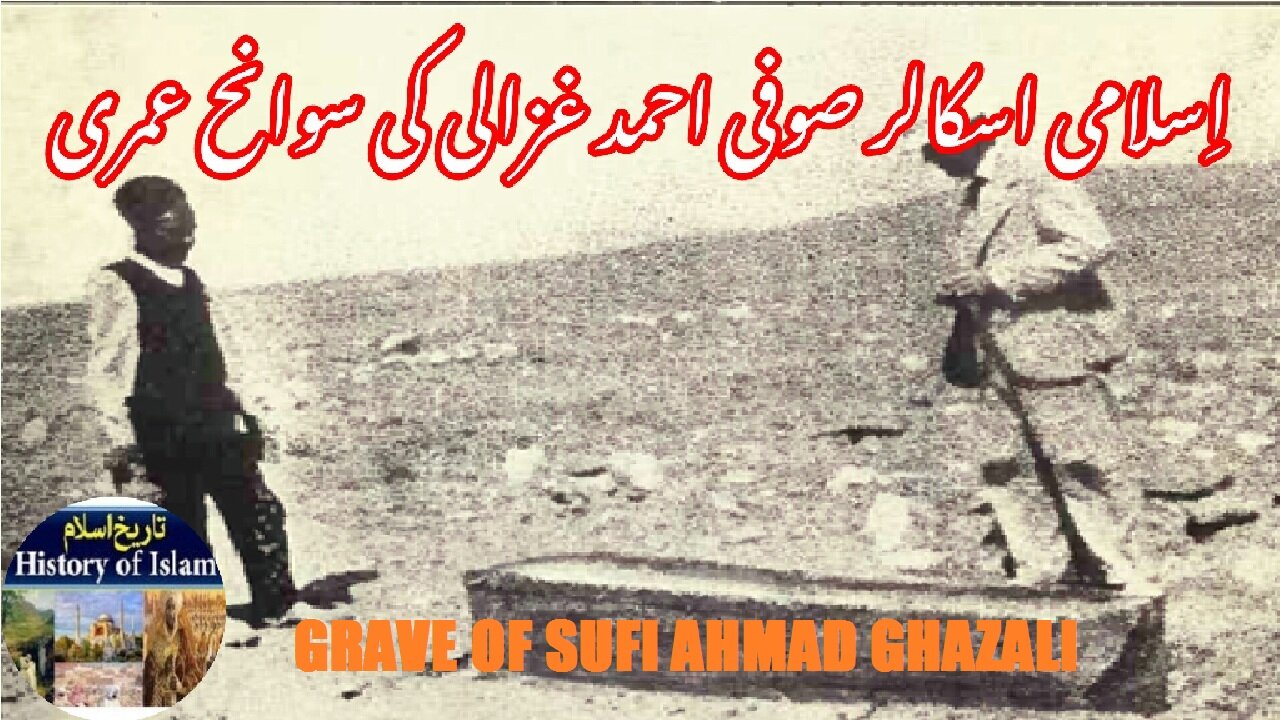Premium Only Content

Biography of Ahmad Ghazali and his tomb | اسلامی صوفی احمد غزالی کی سوانح حیات اور ان کا مقبرہ
@islamichistory813 #AhmadGhazali #Sufism #IslamicHistory
Biography and tomb of Sunni Muslim Sufi Ahmad Ghazali
Dekhti Aankhooon aur sountay kaanoon ko Asslamoalaikum, This video delves into the life and contributions of Ahmad Ghazali, a prominent Sunni Muslim Sufi, writer, and preacher. As the head of the Al-Nizamiyya, Ghazali played a pivotal role in the spiritual and intellectual landscape of his time. Watch complete video as we presenting his biography, examining his teachings, literary works, and the lasting impact he has had on Sufism and Islamic thought.
Ahmad Ghazali was a Sunni Muslim Persian Sufi mystic, writer, preacher and the head of Al-Nizamiyya of Baghdad (c. 1061–1123 or 1126). He is best known in the history of Islam for his ideas on love and the meaning of love, expressed primarily in the book Sawaneh.
The younger brother of the better known theologian, jurist, and Sufi, Abu Hamid Muhammad al-Ghazali, Ahmad Ghazali was born in a village near Tus, in Khorasan. Here he was educated primarily in jurisprudence. He turned to Sufism while still young, becoming the pupil first of Abu Bakr Nassaj Tusi (died 1094) and then of Abu Ali Farmadi (died 1084). He was advanced in Sufism by 1095, and his brother Abu Hamid asked him to teach in his place in the Nezamiya of Baghdad and assume responsibility during his planned absence.
Ahmad Ghazali’s thought, centered as it was on the idea of love, left a profound mark on the development of Persian Islamic mystical literature, especially poetry celebrating love. Many of the topoi (mazamin) used by later poets such as Attar, Sadi, Irqi, and Hafez, to name but a few, can be traced to his works, particularly the Saw?ne?.
Among his predecessors, he was influenced most strongly by Hallaj, and he made of his idea of essential love the basis of his own thought. His belief that all created beauty is an emanation of divine beauty was likewise Hallajian or neo-Platonic in origin. Since God is both absolute beauty and the lover of all phenomenal beauty, Ahmad Ghazali maintained, to adore any object of beauty is to participate in a divine act of love. Hence the practice of na?ar-bazi or sahed-bazi,gazing on young and beautiful faces, a practice for which he became notorious.
He died in Qazvin in 1123 or 1126 and is buried there.
The finding of his tomb in the historic city of Tus—just 24 km from Iran's second-most populous city Mashhad—had laid to rest years of search for the final resting place of the man who had challenged the Aristotelian viewpoint on the creation of the world and was even given the honorific title of Hujjat al Islam
So sisters brothers friends and elders, tomorow we will be described Biography of Sufi Scalar Abu al-Abbas Ahmad ibn Muhammad at-Tijaniyy. Allah hafiz
================================================
-
 1:05:37
1:05:37
Sean Unpaved
4 hours ago $2.18 earnedUnpaved
26.7K4 -
 56:40
56:40
VSiNLive
2 hours ago $1.55 earnedFollow the Money with Mitch Moss & Pauly Howard | Hour 1
21.7K2 -
 1:00:52
1:00:52
In The Litter Box w/ Jewels & Catturd
23 hours agoFIRST 40 DAYS | In the Litter Box w/ Jewels & Catturd – Ep. 754 – 3/4/2025
64.2K32 -
 1:20:04
1:20:04
Awaken With JP
6 hours agoHow Impressive is Zelensky? - LIES Ep 81
75.5K40 -
 2:14:02
2:14:02
The Quartering
6 hours agoEpstein Files FINALLY Arrive, Zelensky CRAWLS Back & Trump Cuts Off, Oscars Sink To New Low & More
96.4K44 -
 57:11
57:11
Russell Brand
4 hours agoBREAK BREAD EP. 16 - SEAN FEUCHT
86.4K5 -
 12:20
12:20
SLS - Street League Skateboarding
6 hours agoYuto Horigome's Top Moments of 2024! All The 9's 🔥
52.2K -
 1:26:52
1:26:52
The Officer Tatum
5 hours agoLIVE: Leftists RAGE As Trump HALTS Aid to Ukraine + More | Officer Tatum Show Ep 72
68.3K30 -
 1:59:43
1:59:43
The Charlie Kirk Show
6 hours agoTariffs and Trade Wars + Peace in Ukraine? + SOTU Preview | Carney, Schweizer | 3.4.25
122K26 -
 43:54
43:54
Ben Shapiro
5 hours agoEp. 2150 - Trump’s STATE OF THE UNION Pledge
75.1K43